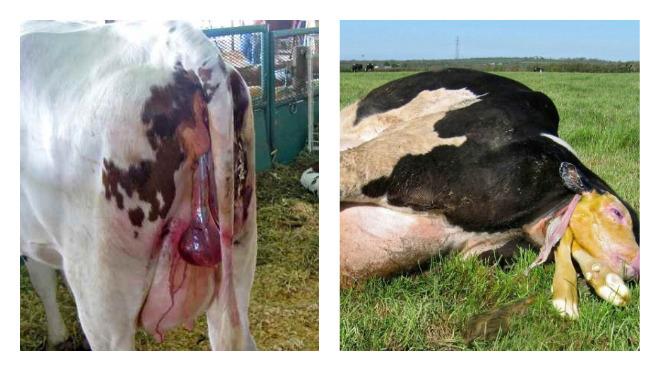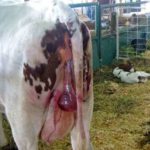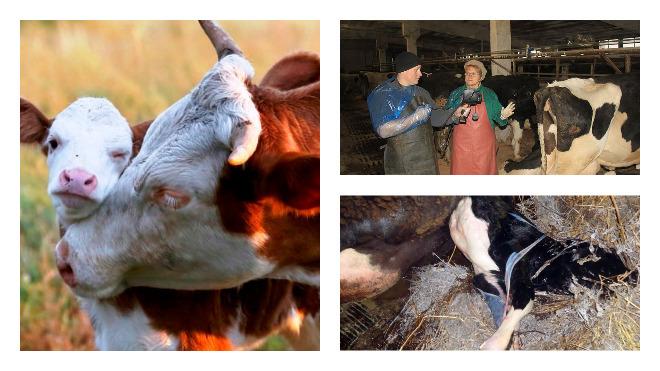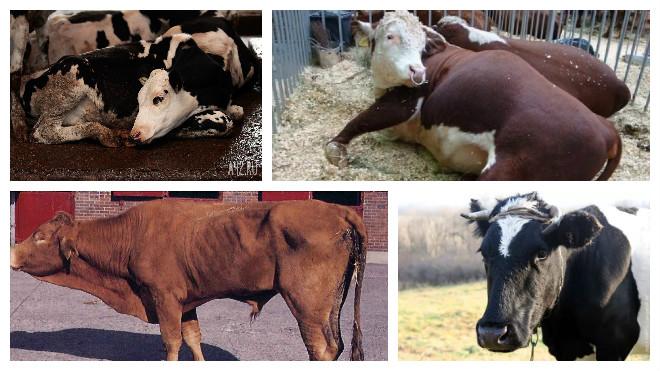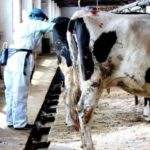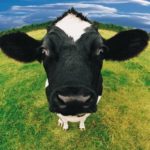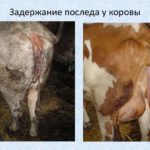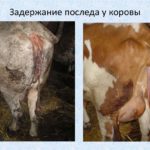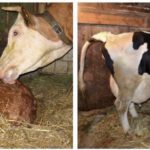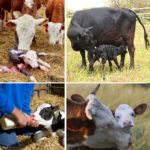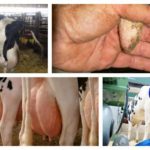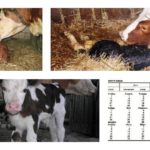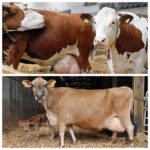Development of the placenta occurs during the first trimester. It is connective tissue covered with epithelial cells. The placenta performs the function of an endocrine gland. Most animals reflexively eat their afterbirth without harm to their health. If a cow eats the placenta after giving birth, this can lead to digestive problems and even death of the animal.
Why does a cow do this?
Eating baby's place after calving is called placentophagy.The main cause of placentophagy is a pronounced lack of vitamins, micro- and macroelements in the cow’s body, which she gave to the fetus during the formation of its body. This phenomenon can be observed in private households and agricultural farms when feeding norms for calving cows are violated.
The placenta contains large amounts of vitamins, minerals and hormones that stimulate uterine contractions after calving. The placenta can be eaten either immediately after calving or during the first 8-15 hours after birth. This is why it is very important to stay close to the animal after birth if the placenta does not come out after 3-4 hours after the calf.
Delay of a child's place in the birth canal for more than 12 hours is a pathology and requires immediate veterinary intervention.
Signs of eating the placenta
On average, the afterbirth comes out 4-7 hours after the calf is born. If it is not there, you need to determine what happened:
- stagnation of the placenta in the birth canal, which is a serious complication of calving;
- The cow ate the child's place.
It is very important to understand the situation as quickly as possible, because the algorithm for further veterinary manipulations depends on this. In order to find out what happened, you need to invite a veterinarian or an experienced zootechnician. You can carry out the diagnosis yourself. Upon visual examination, if there is a baby place in the birth canal, bloody films with a vascular network or a dark strand are visible from the genital fissure.
If no visual signs are found, diagnosis is carried out manually, by feeling the placenta with your hands in the birth canal.
Signs indicating the presence of placenta in the birth canal:
- the animal arches its back in the lumbar region;
- after calving, pushing continues;
- the cow moos hysterically;
- the animal tries to lie down and moves its tail.
If the cow behaves calmly, is not nervous, and her heartbeat and respiratory rate are normal, most likely the placenta has been eaten.
Secondary signs of eating the placenta:
- tympany – increased gas formation in the animal’s gastrointestinal tract;
- loose stools;
- complete refusal to eat;
- increased respiratory rate;
- increased heart rate;
- the animal begins to sweat;
- undigested pieces of the placenta are clearly visible in the stool, the stool is dark, almost black;
- in rare cases - increased body temperature.
If in the first three days the cow does not have colic or rumen swelling, it means that the act of digestion has not been disrupted, and the placenta will be released along with the feces. It is necessary to provide first aid to the pet, since the digestive system of herbivores is not designed to digest animal food.
Possible consequences
If a cow eats the afterbirth, this threatens the development of the following pathological acute conditions:
- A large amount of gases accumulate in the cow's rumen, which puts pressure on the walls and leads to constant pain. This provokes the appearance of acute obstruction, which, in most cases, ends in death.
- A piece of placenta blocks the exit from the trachea to the stomach, and suffocation develops.
- Undigested pieces of the placenta begin to rot, which leads to a severe inflammatory process in the rumen and the development of intoxication.
Animal treatment regimen
If it is determined that the animal has eaten the placenta, special measures must be taken to avoid the development of complications. Their purpose is as follows:
- increased lactation;
- prevention of gastrointestinal complications;
- launch of digestive processes.
The animal is placed on a starvation diet for 48 hours. Drinking should be plentiful and freely available. Thanks to this, undigested pieces of placenta are quickly evacuated with feces. After 48 hours, the cow is offered easily digestible feed - high-quality hay, steamed bran, rolled feed grain.
Using bitters can induce vomiting. Apomorphine hydrochloride powder is suitable for these purposes. It must be diluted in water in a ratio of 1 to 60. If the cow refuses to drink it on her own, the solution is poured through a probe. To enhance the secretion of gastric juice, artificial gastric juice can be used. To obtain it, you need to mix a liter of water, 20 grams of pepsin and 20 ml of hydrochloric acid. Give the solution twice a day.
Barium chloride is effectively used to enhance intestinal motility. You need to dilute 5 grams of the substance per liter of water and drink the solution twice a day. To suppress the development of pathogenic microorganisms, drugs such as Ichthyol and Phthalazol are used. It is permissible to give the animal a pale solution of potassium permanganate (no more than 1 gram per 2 liras of water). When the chewing gum disappears, hellebore infusion is used.
Preventive measures
The simplest and most effective preventive measure is to remove the placenta immediately after childbirth. The child's place must be discreetly taken from the animal and immediately buried in the soil.To ensure that the animal does not have a desire to eat the placenta, it is necessary to carefully monitor the diet and supplement it with all the necessary vitamins and minerals, especially during pregnancy.
28 days before calving, the cow’s diet is adjusted. It becomes less caloric, and low nutritional value hay from cereal crops is introduced into it. 21-7 days before calving, the veterinarian begins to adjust the daily diet depending on the condition of the animal. Concentrates are added to feed mixtures. At the time of calving, the woman in labor needs to drink a bucket of lukewarm salted water and feed 500 grams of steamed bran. The animal should not be hungry. The bedding should be clean, and fresh hay should be placed next to the cow.
If in the first hours after birth it is not possible to be near the animal, then the cow’s head should be fixed on a short leash so that she cannot reach the placenta.
Is it possible to drink milk from such a cow?
Placentophagy leads to severe digestive upset in the form of diarrhea. Undigested particles of the baby's place are excreted in the feces 8-11 days after calving. All this time the process is accompanied by swelling. Drinking milk is not recommended for 21 days.

